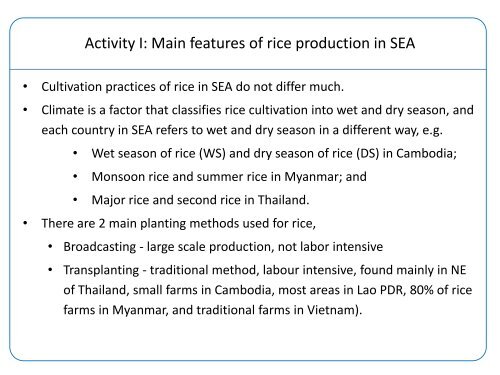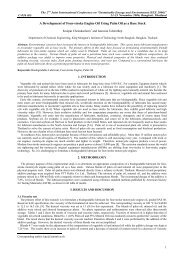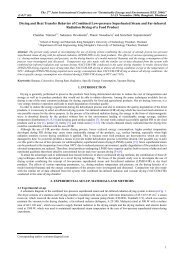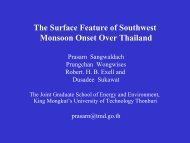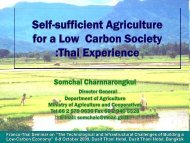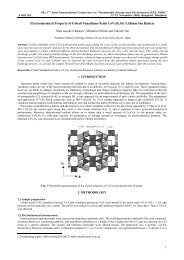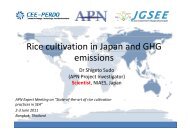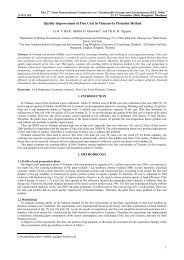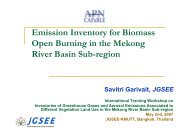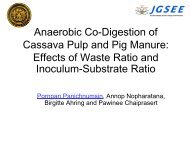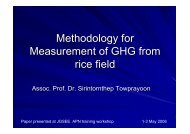Strategic rice cultivation with energy crop rotation in Southeast Asia
Strategic rice cultivation with energy crop rotation in Southeast Asia
Strategic rice cultivation with energy crop rotation in Southeast Asia
Create successful ePaper yourself
Turn your PDF publications into a flip-book with our unique Google optimized e-Paper software.
Activity I: Ma<strong>in</strong> features of <strong>rice</strong> production <strong>in</strong> SEA<br />
• Cultivation practices of <strong>rice</strong> <strong>in</strong> SEA do not differ much.<br />
• Climate is a factor that classifies <strong>rice</strong> <strong>cultivation</strong> <strong>in</strong>to wet and dry season, and<br />
each country <strong>in</strong> SEA refers to wet and dry season <strong>in</strong> a different way, e.g.<br />
• Wet season of <strong>rice</strong> (WS) and dry season of <strong>rice</strong> (DS) <strong>in</strong> Cambodia;<br />
• Monsoon <strong>rice</strong> and summer <strong>rice</strong> <strong>in</strong> Myanmar; and<br />
• Major <strong>rice</strong> and second <strong>rice</strong> <strong>in</strong> Thailand.<br />
• There are 2 ma<strong>in</strong> plant<strong>in</strong>g methods used for <strong>rice</strong>,<br />
• Broadcast<strong>in</strong>g - large scale production, not labor <strong>in</strong>tensive<br />
• Transplant<strong>in</strong>g - traditional method, labour <strong>in</strong>tensive, found ma<strong>in</strong>ly <strong>in</strong> NE<br />
of Thailand, small farms <strong>in</strong> Cambodia, most areas <strong>in</strong> Lao PDR, 80% of <strong>rice</strong><br />
farms <strong>in</strong> Myanmar, and traditional farms <strong>in</strong> Vietnam).


